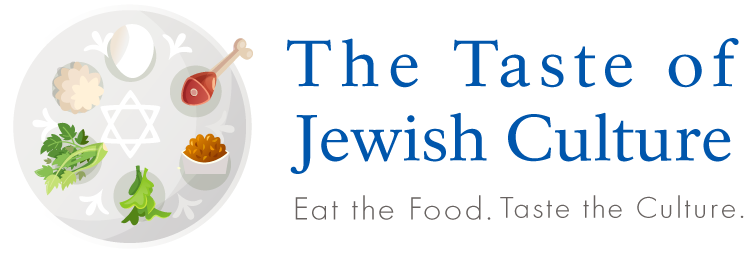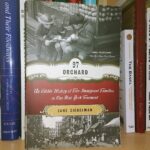Okay, so you can probably guess what first drew me to this book, right?
Of all the Jewish Food books I own and have read, this one is unique. The Angel and the Cholent: Food Representation from the Israeli Folktale Archives, by Idit Pintel-Ginsberg is not a book of food history, nor is it a cookbook or a book analyzing Jewish food on a sociological level. As the subtitle indicates, this entertaining book contains folktales recorded in Israel, all of which share a common focus: food. While I am no expert in the field of folklore and mythology, I still understood that you can learn a lot about a people from the tales they tell, and what Jews have to say about (or involving) food could also be enlightening in my explorations of the topic. And if nothing else, I suspected I’d find some good “color” to include in some of my writing.
I was not remotely disappointed. This book contains thirty folk tales by people from seventeen different locations or ethnic groups. One of the first things I noticed is that by far the most from any one single place came from Jews who had come from Poland. This obviously might be a coincidence, but I also wondered if that indicated anything about that specific culture’s relationship to food. I’ll leave it to others to speculate on that, but it is at least an interesting idea to consider.
The tales are categorized in five chapters, arranged around more detailed subject matter, beyond just “food.” They are: the pure pleasure of eating, and its boundaries; food in relation to gender relations; food in connection with social interactions; food as it relates to Jewish group identity; and food in connection with holy days such as Sabbath. Each tale is followed by an analysis, comparing it to standard folk tale types known from around the world, and providing insights into the significance of the tale.
Some stories are more famous than others, and as is the nature of folk tales, a few show up in multiple iterations within the archives (and in other venues). Some have a humorous bent, others are more preachy and moralistic, while a few are merely curious. The stories are all rather short; the longest is about 3 pages, and most are shorter than a single page. The analyses that follow are somewhat longer, on average, but still fairly short and concise.
So what you end up with in this little book is a quick read, that is enjoyable, thought-provoking, and relatable. Though written in scholarly fashion, the book is eminently readable and pleasant to mainstream audiences. I have even taken to pulling it out whenever I host a Shabbat meal. I ask someone to pick one of the stories, either at random or because something in the title speaks to them. After they read the tale, we chat about it for a few minutes. A fun way to connect with food, and with the broader Jewish people at the same time.
The Story of the Title
The tale that the book’s title references is one I have come across in other versions and places. But since it is short, and connected with a topic that is dear to my heart, I figured I’d share it with you here. Enjoy!
Told by Mr. Livni, Russia
When God created the universe, he created with each and every thing an angel that would serve it and look after it. At that time, he created an angel in charge of the shofar blasts.
Surely not every day of the year we bloe the shofar, only on Rosh Hashanah. So throughout the year there is no role for the angel in charge of the blasts. Therefore, he was given a second role: to watch over the hamin on Shabbat.
And what if Rosh Hashanah falls on Shabbat? How would he watch the hamin and the blasts too? Therefore, he was given a dispensation. On Rosh Hashanah, the shofar is not blown so that he will be available and free to look after the hamin.
The angel is faithful in both of his roles. When you want to make soup, you have to stand by the fire all the time and watch over it, if not the soup boils over, spills, and can extinguish the fire. As for the hamin, it is put in the oven for a whole day, and when taken out, it is nicely cooked.






